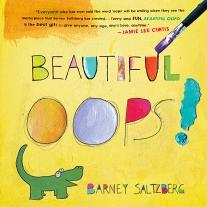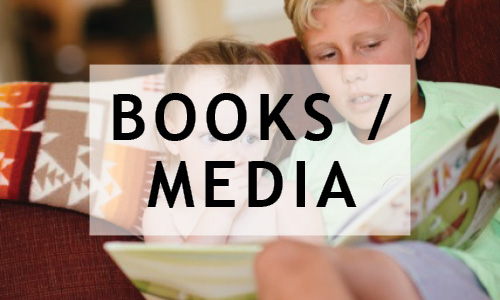 Driving around in my car with the radio droning on in the background, I perked up when listening to an author’s interview on CBS radio with Barney Saltzberg, who just wrote “Beautiful Oops!” A fascinating topic for anyone who dabbles in perfectionism or has been challenged by a child who can’t tolerate making a mistake, this book is about using mistakes as an opportunity to take a different path, create and learn.
Driving around in my car with the radio droning on in the background, I perked up when listening to an author’s interview on CBS radio with Barney Saltzberg, who just wrote “Beautiful Oops!” A fascinating topic for anyone who dabbles in perfectionism or has been challenged by a child who can’t tolerate making a mistake, this book is about using mistakes as an opportunity to take a different path, create and learn.
I find that often an author’s story is a language lesson in itself for children to learn from. Barney Saltzberg shared that his mother was a painter and didn’t allow him to use coloring books–instead he was provided lots of blank paper to create his own images. His book is dedicated to another adult who was influential in his artistic life, Helen Slater, who provided clay for him to play with after school. Even though he wasn’t thrilled with his clay figures, her enthusiasm over his little projects lead to glazing, mounting and celebrating his creations.
“Beautiful Oops” serves as a delightful, bright, interactive book for kids, demonstrating through paper art that a spill, tear or smudge can be transformed into a piggie, crocodile’s smile, or a bunny. As preschoolers name the action, “the elephant,” “a fishie,” the text is telling another story of stains, drips and smears that lead to exploring, or finding worth and potential in an oops. I applaud children’s authors who use strong vocabulary to push young minds, getting them ready for reading. But let’s go up the growth chart a step and see this book’s relevance for older kids. I can imagine a teacher reading this to a circle of fourth graders and starting the conversation about making mistakes–what slip ups do we make in our school work? How do we use our “mistakes” to revise or go in a different direction? “Beautiful Oops” could launch a writing assignment or a collaborative class discussion looking at “goofs” that kids shared for possible ideas for potential fixes or trying a new direction. This little book can be read on many levels to inspire, teach or just entertain.
Recommended age: Preschool through adults–even grownups can learn from this book!



